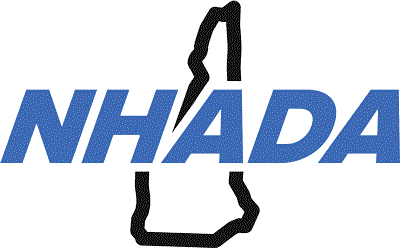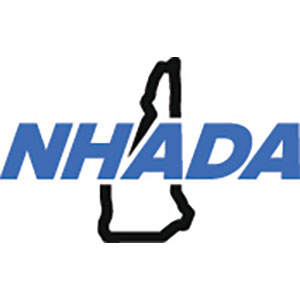When an injury occurs at work, there is no doubt it is a disruption: to the injured worker, the employer, and the workflow. For the employee, it may mean time lost from work either for medical appointments or disability. They may be unable to enjoy certain activities with their family, or participate in hobbies or sports. For the employer, it may mean they are missing an employee crucial to running their business, or they may need to temporarily make staffing adjustments to continue offering the same services they did before the employee was injured.
Injuries adversely affect the member, directly and indirectly. Some studies state that the indirect costs associated with an injury in the workplace are greater than direct costs.
Direct costs:
- Medical costs
- Indemnity costs paid to the injured worker
- Litigation costs involved in defending questionable claims
- Increased experience modification factors
- Remember medical-only claims costs are discounted 70% when the experience modification factor is calculated.
- Increased premium due to increased experience modification factors
- Decreased rebate as payments reduce rebate dollar for dollar
Indirect costs:
- Training replacement employees
- Accident investigation
- Implementing additional safety and corrective measures
- Lost productivity
- Repairs of damaged equipment and property
- Costs associated with lower employee morale and absenteeism
If there was only one piece of advice to give to the employer and employees to avoid these costs related to an injury in the workplace, it would be prevention. Our NHADA WCT Loss Prevention team works relentlessly with members to help them prevent injuries from occurring. Members who work closely with our Loss Prevention team are the most successful in preventing injuries.
Safety Services:
- Safety training. Some offerings are: CPR/AED certification, forklift training, hazardous material handling, lift safety and fire safety.
- Online OSHA specific training
- Biannual safety walk-throughs
- Safety committee meetings
- Assist with OSHA inspections and visits
As we know, despite all our preventative measures, accidents do happen in the workplace. When an injury does occur, our members can take steps to mitigate the costs for the injured worker and the member. Our collective goal must always be to ensure the injured employee receives prompt quality and appropriate medical care so they can get back to their regular life and work as soon as possible. The most critical step in the workers’ compensation process is prompt reporting of all injuries by the employee to their immediate supervisor. Neither the employee nor the supervisor should decide what should and shouldn’t be reported; all injuries at the workplace must be reported.
How to report an injury:
- Call NHADA at 603-224-2369 and speak to the Nurse Case Manager or another member of the WCT Team. Report the injury details, and we will assist with a referral to a network provider if treatment is needed.
- Fill out your Employer’s First Report of Injury and submit it to us, either online through our website: https://www.nhada.com/our-solutions/workers-comp/report-an-injury; faxed to 603-224-8126; or emailed to both Pete Sheffer at psheffer@nhada.com and Marta Silakka at msilakka@nhada.com.
- Online claim filing requires a password; click “request a password,” and it will be emailed to you.
The NH Department of Labor requires the Employer’s First Report of Injury to be filed within five calendar days of the employer’s knowledge of the injury. We electronically submit data to the NH Department of Labor daily. The Department of Labor has the ability to fine an employer for late reporting. Fines start at $100 and can go as high as $2,500 for repeat offenders. The National Council of Workers’ Compensation Insurance conducted a study on the effect on claims costs due to delayed reporting of injuries. That study revealed that a two-week delay in reporting cost an average of 18% more than those claims reported during week one; weeks three and four averaged 30% more; and after four weeks, claims costs rose over 45% more.
Delays in reporting increase costs because:
- A delay in referral for the best and most appropriate medical care within the managed care network
- Time lost from work before the employer knows the injury is work-related
- Time lost from work if there is light duty the employer is not accommodating
- Facts and information about the injury may be forgotten
- Accident investigation may not be as thorough when conducted late
- Video of the incident may be lost
- Claims that may have been defensible are now difficult to disprove
The best way to avoid delays is to notify your employees that they are required to report all injuries immediately, no matter how minor they are perceived to be on the date the injury occurs. Educating all new and existing employees on the need to report injuries, and informing them that they are part of a managed care program, is crucial to managing costs.
Medical costs can be contained when non-life-threatening injuries occur, and a call is made promptly to Marta Silakka, the Nurse Case Manager. Not only will we be made aware of the injury and assistance provided for the referral for medical care, but we can avoid something minor becoming something major. Sometimes the simplest of injuries can evolve into a dangerous complication. We may suggest medical treatment even if both the employer and employee don’t believe it is necessary.
Before an injury occurs is the best time to set up office policy on what to do when an injury occurs.
Minor to Major:
- A simple cut, scrape, or puncture wound can become infected. A simple puncture that could be treated at an occupational health provider’s office for less than $500, with wound care and a tetanus shot, can evolve into a major infection in a matter of hours or days. That could result in emergency medical care, hospitalization, IV antibiotics, time lost from work, and thousands of dollars in medical bills.
- A simple back strain can be treated at an occupational health office with over-the-counter medications, home therapies and physical therapy, or a home exercise program on the day of the injury. Not seeking treatment typically could lead to the injured worker becoming so uncomfortable in 24 – 48 hours that they seek emergency medical treatment. This then could require prescription medication and time lost from work, not to mention the cost of the emergency room visit.
The workers’ compensation process can be overwhelming to many. The rules, deadlines and details seem complex, but the NHADA WCT Team can help you manage. Before an injury occurs is the best time to set up office policy on what to do when an injury occurs. Deb Handrahan is our team’s expert in this area. She is available to visit our members, review the workers’ compensation process and forms, and assist you in developing and identifying temporary alternative duty jobs. The time to figure this out is not when the injured worker is standing in front of you in pain and in need of medical treatment. Knowing what forms to complete, who to call, how to assist the injured worker, and having light-duty ready and available is the key to cost containment. Time lost putting this in order when the accident occurs will cost the member money and delay our investigation. We encourage all members to request a visit with Deb to review the process of what to do when an employee is injured. (Deb can be reached at 603-224-2369 or by email at dhandrahan@nhada.com.)
When injured workers seek medical treatment, they will be given a NH Workers Compensation Medical Form after the visit. This form is extremely important to the injured worker, the employer and us. The form outlines the description of the injury, employees’ complaints, medical diagnosis and treatment, work status, if the medical provider believes the injury is work-related, whether or not the injured worker has reached maximal medical improvement or if there is any permanent impairment. After seeking medical treatment, the employee shares the form with their employer when arriving at the workplace. This form outlines the plan for return to work by detailing light duty. It also gives the employer information on the treatment of the injury and follow-up care. Most providers will forward this form to us, but we encourage employers to provide it via fax or email, just in case we haven’t received it. By sending the form to us, we can assist the member in identifying light-duty work and keeping the injured worker working.
Many studies have been done to determine how to reduce workers’ compensation medical costs. All show an injured worker will recover faster if they can work light-duty during the treatment of their injury versus staying home and out of work until they are 100%. Studies also show that when injured workers return to work light duty, they require less medical treatment and, therefore, reduce the overall cost of the claim. The NHADA WCT Trust Agreement states that all members will provide light-duty work to their injured workers. Arranging a return to light-duty can be a daunting task for an employer; this is another area where Deb Handrahan can be of assistance. If an injured worker returns from the medical provider and the light-duty appears challenging, we encourage you to contact Deb for direction. Sending that injured worker home versus accommodating the light-duty will increase claims costs and change a claim from a medical-only to a lost-time claim. This will affect your premium and can be avoided.
When you sell a car and pass over the keys to the customer, you make sure they know all the ins and outs of that vehicle and how to run it safely and effectively. Think of the workers’ compensation process in the same manner: before we pass you the keys to containing costs, we have a few details to go over with you. In the long run, we will all enjoy the ride more.
Your NHADA Workers Compensation Team is here to assist:
Peter Sheffer at psheffer@nhada.com
Marta Silakka at msilakka@nhada.com
Deb Handrahan at dhandrahan@nhada.com
Justin Dowdy at jdowdy@nhada.com
Marianne Gourgiotis at mgourgiotis@nhada.com
Give us a call or email us. Set up a meeting and run your questions by us before they turn into problems. Together we can work to keep claims costs down.









